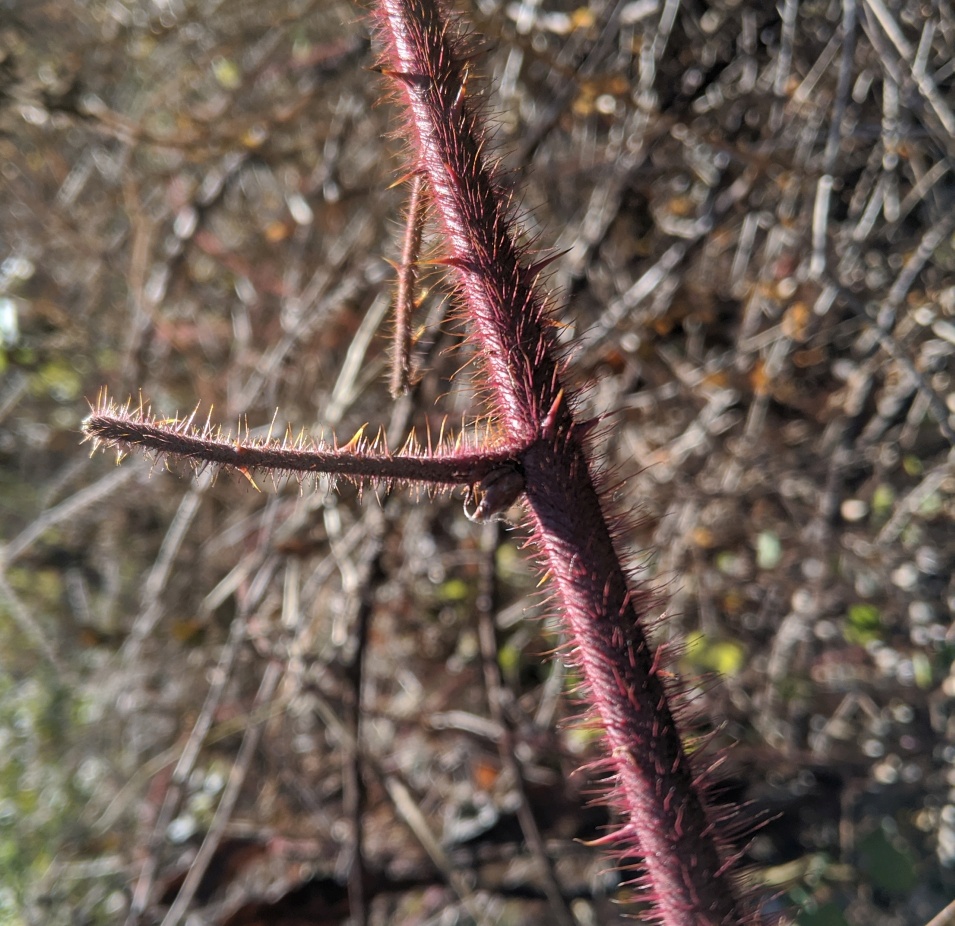
OUT OF CHARACTER INFORMATION
- Intent: To create a plant from which poison can be derived, and also carries the name Thistlebark.
- Image Credit: BirdOutsideMyWindow blog
- Canon: No
- Permissions: N/A
- Links: A Deadly Game: Part 2, Insubordination, Parenthetical, Things We Lost in the Fire, By a Thread, Among Thorns, among others.
- Name: Thistlebark
- Origins: Thakwaa
- Other Locations: Unknown, rumours of biological warfare experiments.
- Classification: Vine
- Average Growth Cycle: Native birds pick up the seeds of Thistlebark and then deposit it via their feces. Providing the deposit is in a well drained location, with ample water supply, the plant will begin to germinate. It will grow slowly, and only ever along the ground preferring the shade of long grass on the plains of Thakwaa. The plant as not been studied much, but rare observations have indicated the plant may not grow more than a couple of meters each year. Nevertheless, the plant is extremely hardy and some estimates have placed plants as being over a kilometer in length. Due to its penchant for establishing new root systems along its growth path speculation has arisen that it functions almost as a hive-minded plant and rumours persist that some Thistlebark plants are over a thousand years old. Cutting a Thistlebark plant is a fineable offense, for it will simply now grow as two plants instead of just one.
- Viability: It's initial germination relies on a shady well water but no boggy environment. From that point on it prefers to grow beneath the canopy of shorter grass in open fields. So long as one of its root systems is able to obtain water, the plant as a whole is nourished.
- Description: A brownish red colour, about the thickness of a small tree branch, Thistlebark grows along the ground and never rises more than an inch or two from the dirt.
- Average Height: Between half and a full inch
- Average Length: Rumoured for some to stretch over a kilometer.
- Color: Brown/Red. No flowers, just thorns.
- Nutritional Value: Absolutely no nutritional value.
- Toxicity: When the base of one of it's thorns is scrapped with a blade, a small amount of clear resin is secreted. This resin can be distilled into a deadly toxin. The toxin itself is slow to take effect, being able to be administered hours or days before death will occur. The quantity of the toxin will determine the time it takes to kill the victim. Contrary to other poisons, the more ingested the longer it takes to kill. The toxin tricks the body into killing itself. The more toxin in the system, the longer it takes for the body to rid itself of the actual poison before turning on itself.
- Other Effects: In it's natural state, eating Thistlebark will not harm the eater, provided the thorns have been adequately removed.
- Distinctions: Thistlebark is a pest to the people of Thakwaa, but it is a pest that is left alone so as not to make it an even greater pest. The people are somewhat resigned to the fact that eventually the planet will be over run by the plant. For now it remains hidden beneath the wind swept fields, unless some careless traveler happens to stand on it.
- Hardy
- Multiple root systems
- Obscured
- Long lived
- Slow growth rate
- Slow reproduction cycle
- Treated as a weed
HISTORICAL INFORMATION
Treated as weed on Thakwaa for thousands of years, it was once extremely well maintained and controlled by those that dwelt there. A century of lax management saw the plant reproduce in a few unknown locales, and since that day, Thistlebark has been a bane in every unsuspecting plain traveler's day. Few people know of its toxic properties, even less live to tell others.





